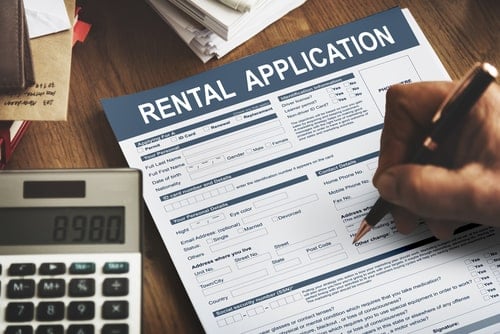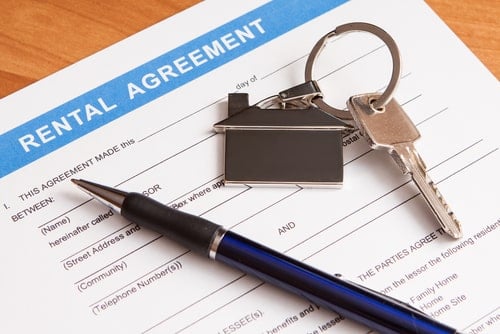Finding the right tenant for your rental property could prove to be a tedious process. After going to all of that effort, what happens when the tenant skips town, leaving your apartment sublet to someone else? What could easily become a landlord’s worst nightmare is also an avoidable situation. Join us below as we explain what subletting is, the pros and cons, along with how landlords can use a subletting policy to protect themselves from unauthorized occupants.

What is Subletting vs. a Lease Assignment?
Simply put, subletting is when third-party rents or “subleases” the property from the original tenant. This third party will now live in the rental and assume the rental payments. Therefore, the individual or family you screened and rented to is no longer occupying the unit. This presents a major challenge for landlords; for starters, you do not even know who is living in your investment property. As you continue reading, we will discuss how a landlord can deal with these situations and, more importantly, avoid them altogether.
 What is a Lease Assignment?
What is a Lease Assignment?
Alternatively, lease assignment allows the landlord more control over who is taking over the lease on a rental unit. This is a formal agreement that allows for the rights and obligations under the lease to be transferred to a new party. The benefit here is the tenant can still bring prospects to the owner; however, they are still held to the standard screening qualifications.
The Two Types of Subleases Every Landlord Should Know
Short-Term Sublease – A short-term sublease is used for a temporary or extended absence of the original tenant. For example, the tenant must travel out of state for a work assignment or family matter. Typically, this can last for anywhere from 30 days to 3 to 6 months or however long is necessary.
Permanent Sublease – When a tenant plans to leave and never come back, they search for a third party willing to take over the property through a permanent sublease. Like a short-term sublease, any changes to the property’s tenancy should never be done without the permission of the property’s owner.
Why Would a Tenant Try to Sublet the Lease?
Most commonly, tenants that need to terminate their lease early simply do not want to incur the added cost or penalties associated with breaking a lease. That said, one of the most common reasons a tenant may seek to sublet is relocation for a job, schooling, or life changes. While this may be a legitimate reason to move, it still leaves landlords in a tough situation.
Furthermore, some tenants just vacate because they want to or for reasons such as disputes with roommates or neighbors. In either case, having a solid lease process for early termination and the prohibiting of subletting is key.

The Pros and Cons of Subletting for Landlords
Subleasing is not bad in all instances if the landlord is involved in the process from the start. In fact, it can prove beneficial for hard-to rent units or during slow times of the year when an extended vacancy is likely. However, every landlord should weigh the pros and cons as they look into these types of agreements. Check out some of these points below –
Pros of Subletting
- No Turnover or Vacancy – Allowing a sublease can help prevent a tenant from breaking their agreement and skipping out on you. Plus, subleasing means the new third party will take over the existing lease, which n=means no vacancy or gaps in rental payments.
- Tenant Finds Prospects – In the event of a sublease, the current tenant must bring qualified individuals to the landlord for approval. Therefore, saving both time and marketing money for the landlord.
- Possible Shared Responsibility – Depending on the sublease agreement terms, the original tenant may still have some responsibility if the subletter vacates, causes damage, or stops paying. This adds another layer of protection for the landlord’s interests.
Cons of Subletting
- Trouble Screening – If the landlord does not screen all sublet candidates, this could leave property owners vulnerable. Basically, without proper screening, landlords have no idea what kind of tenants will occupy the property. The departing tenant is likely just trying to find someone able to cover the rent and is not necessarily looking out for the landlord’s long-term interests.
- Risk of Property Damage – If the tenant brings on a renter who never signed the original lease, they may be unaware of restrictions or conduct codes. Therefore, they could inadvertently cause or perpetuate damage to the property without the landlord’s knowledge.
- Possible Eviction – Just like the potential for damage, someone not on the original lease could cause other problems with the HOA, neighbors, or city. Any of these violations could result in the need to pursue eviction proceedings.
How Can Landlords Use Subletting Policies to Protect Themselves?
Avoiding potential problems down the road is the goal of two key processes a landlord must complete – thorough screening and a valid lease agreement. While there are no guarantees that these processes will avoid every undesirable situation, they help considerably. Let’s examine these processes a bit closer –

- Screening Applicants – Standard screening qualifications are a landlord’s first and best defense against problem tenants. Keep in mind; these screening standards must not violate Fair Housing Laws and thus must be the same for all applicants. Generally, proper screening includes a credit check, income verification, criminal background check, and previous landlord or professional references.
- Lease Agreement – A signed lease agreement is the foundation of any good landlord-tenant relationship. The lease must clearly define the policies, responsibilities, and consequences for each party. Including verbiage to forbid subletting the unit is strongly encouraged. Furthermore, be sure to outline the penalty and process for breaking the lease early. Before the tenants move in, take time to answer any questions they may have about the lease terms so everyone agrees.
What Include in Your Rental’s Subletting Policy?
When creating a subletting policy or clause for a rental agreement, there are some important things to include. Landlords need to protect their interests while working with the tenant. This avoids a vacancy and the unnecessary hassle of an unauthorized occupant. So, be sure to include some of the provisions below –

- No Short-Term Sublet – As sites like Airbnb and VRBO have gained popularity in recent years, it is easy for tenants to create short-term listings at your property. This should be strictly forbidden in the lease as it presents a huge liability for landlords.
- Landlord Consent Required – The landlord should get the final say on any occupant living in the home. Therefore the lease subletting policy should indicate that owner permission is required for subletting. Tenants should provide a request to sublet in writing and include the reason for subleasing, length of the sublease, and information about the tenant.
- Screening – Screening is essential whether the tenant plans to be there for one month or one year. Additionally, to comply with Fair Housing Laws, the screening qualifications must be the same for all prospects. Thus, a proper screening should include a credit check, criminal background, income verification, rental history, and references.
- Require Insurance – Requiring a tenant to have renters insurance has become industry standard over the last several years. Therefore, as part of a subletting policy, requiring the incoming tenant to have insurance is necessary.
- Outline Payment Requirements – Ensure that the agreement clearly states how and to whom the new tenant must pay rent. Furthermore, stating all rent goes direct to the owner avoids the original tenant from charging a premium and pocketing the difference.
How Property Management Can Help Protect Your Investment
When it comes to a legal lease or subletting policy for a rental property, there are many details to cover. More importantly, the finished lease agreement must follow all federal, state, and local laws to be legally enforceable. This can create a stressful and daunting task for property owners. Thankfully, relying on a property management firm with experience and time-tested documents allows owners to breathe a sigh of relief.
At Bay Property Management Group, we have you covered! From onboarding your property to late-night maintenance calls and everything in between, our dedicated staff handles it all. Give us a call and see how full-service management can make investment ownership the enjoyable experience it should be.

 What is a Lease Assignment?
What is a Lease Assignment?